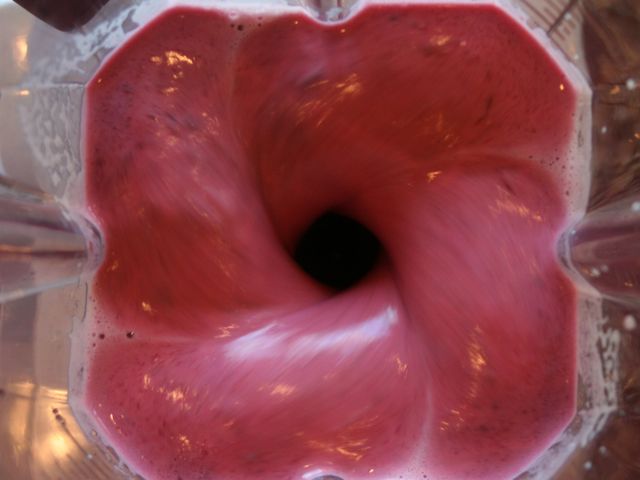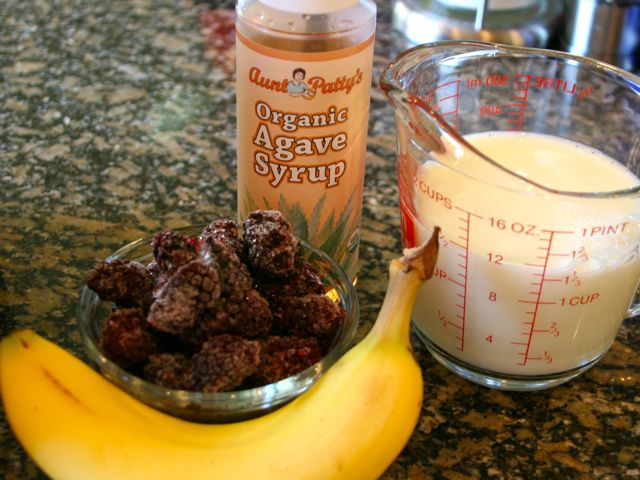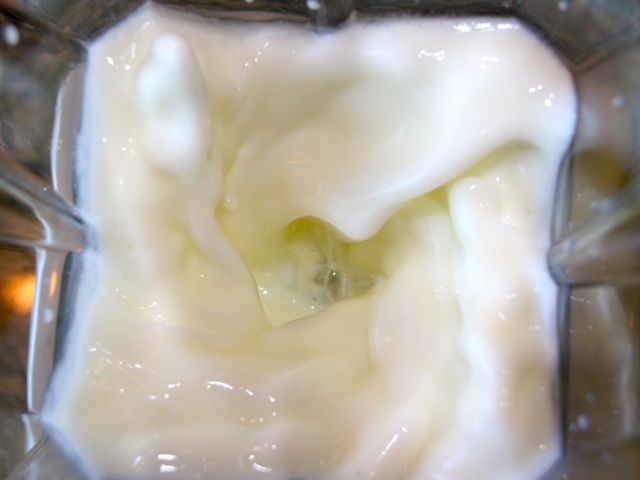
fruits, l
(article, Hank Sawtelle)
[%pageBreakSettings nobreak=true][%adInjectionSettings noInject=true] A few years ago, my cheap old blender finally broke. My husband bought me a classic Waring blender with a chrome base — very pretty. The problem is that it doesn't blend! I can't make a smoothie without jamming a spoon into it to do half the work. I know that professional kitchens often use these blenders, so I'm wondering if you have tips for blending, especially with Waring blenders? — Kim C., Portland, Oregon I had a Waring (it was a wedding gift) for many years, and never really fell in love with it. As you mentioned, they look great, and the World-War-II-era metal toggle switch has a satisfying snap, but I was underwhelmed by the actual blending performance. Although they are marketed as “professional” blenders, I can't remember seeing one in a pro kitchen. Among other things, I don't think the heavy glass pitchers would be practical in a restaurant environment. [%image reference-image float=left width=400 caption="An excellent smoothie."] A few years ago, I started making a lot of smoothies, and grew increasingly frustrated with the Waring's tendency to bog down. It seemed like the base of the pitcher was too narrow to allow the ingredients to circulate freely. So, after extensive research, I decided to take the $400-plus plunge on a new Vita-Mix. Despite the cheesy 1970s health-food name, I've been super-impressed with the Vita-Mix, and haven't regretted the purchase. And I do see them frequently in restaurant kitchens, often under the professional label “Vita-Prep.” They are real workhorses. The Vita-Mix has a huge, wide pitcher, a rugged 2-plus horsepower motor, and an infinitely variable speed-selector dial (plus a toggle switch for “high,” which is insanely high). They are effectively self-cleaning: whizzing hot water and a few drops of dish soap yields an internal-car-wash-type spectacle. (I can also attest that the Vita-Mix will launch a blanket of soapy water up to 10 feet if the operator forgets to reset the speed to “low” before turning on the power. Funny, then sad.) In addition to smoothies, I use my Vita-Mix to make hummus, purée sauces, and whiz together simple, pure sorbets. (The sorbet secret? Just blend fresh fruit until liquefied, with a little sugar to taste, then freeze in an ice-cream maker.) The manual even suggests that you can cook soup while blending the ingredients on high speed (things do tend to warm up), but I doubt you'd win any efficiency awards doing it. On the minus side, the Vita-Mix is huge, very loud, and has a redonkulous price tag for a small appliance. Nonetheless, it deserves a spot on your wish list. Used models show up regularly on eBay and craigslist, and they have a reputation for lasting forever. There are similar blenders on the market, but I haven't tried them. Notably, Waring has entered the over-the-top, hulking-blender game with their Pro 3HP model (around $400), and Blendtec sells their behemoth Total Blender for around $400 also. (Even if you're not shopping for a blender, check out Blendtec's series of hilariously deadpan "Will it Blend?” marketing videos, in which they use their product to blend golf balls, glow sticks, an iPhone, and more.) [[block(right). [%image ingreds width=300 caption="First, assemble your ingredients — in this case, frozen marionberries, a banana, 1-percent milk, and agave syrup (plus, ice cubes as necessary for texture/temperature)."] [%image liquids width=300 caption="Get the liquid ingredients moving . . ."] [%image fruits width=300 caption=". . . before adding the fruit."] ]] But you still own a regular Waring, and you still need advice. The trick is understanding the strength of the blender, which is whizzing up liquids. If the mixture gets too thick/solid, any blender — as Matthew Amster-Burton realized when using the vaunted Vita-Mix to make [/columns/bacon/milkshakes milkshakes] — will have problems. The tendency when making a smoothie is to dump all of the ingredients — frozen fruit, milk, etc. — into the pitcher and turn it on. Instead, try starting with just the liquids in the pitcher, playing to the blender's strength. Get those moving, then add the bulk of any powders (sweetener, protein mix, whatever) to dissolve. Finally, start adding the fruit in batches, with the blender running at a good clip. Frozen fruit will gum up the works more quickly, so try letting it thaw partially. The contents of the blender should mix freely during most of the process. If you add all of the fruit and the smoothie isn't thick enough, try adding ice cubes one or two at a time until you get the desired consistency. If/when the blender stops mixing — usually because an air pocket forms around the spinning blade under a dome of thick smoothie goodness — you have no safe choice but to turn it off and stick a utensil in to redistribute things. Adding a little more liquid helps, too. But these stoppages should be less frequent with the liquid-first method. If you love super-thick smoothies and the liquid-first method doesn't help, try your food processor. In contrast to blenders, food processors — with their slower blades and roomy bowls — excel at puréeing solid foods, but not so much at mixing thin liquids. Process fresh or semi-frozen fruit until it smooths somewhat, then add the other ingredients to achieve the desired consistency and balance flavors. You may need to scrape the sides of the bowl periodically with a spatula, and you will definitely have to clean a bunch of clunky food-processor parts. Other people swear by dumping everything in a tall glass and pureeing it with an immersion blender, but I've never used one that could make a smoothie smooth enough. p(bio). Based in Portland, Oregon, Hank Sawtelle has engineering, legal, and culinary degrees.

fruits, l

ingreds, l

liquids, l

reference-image, l